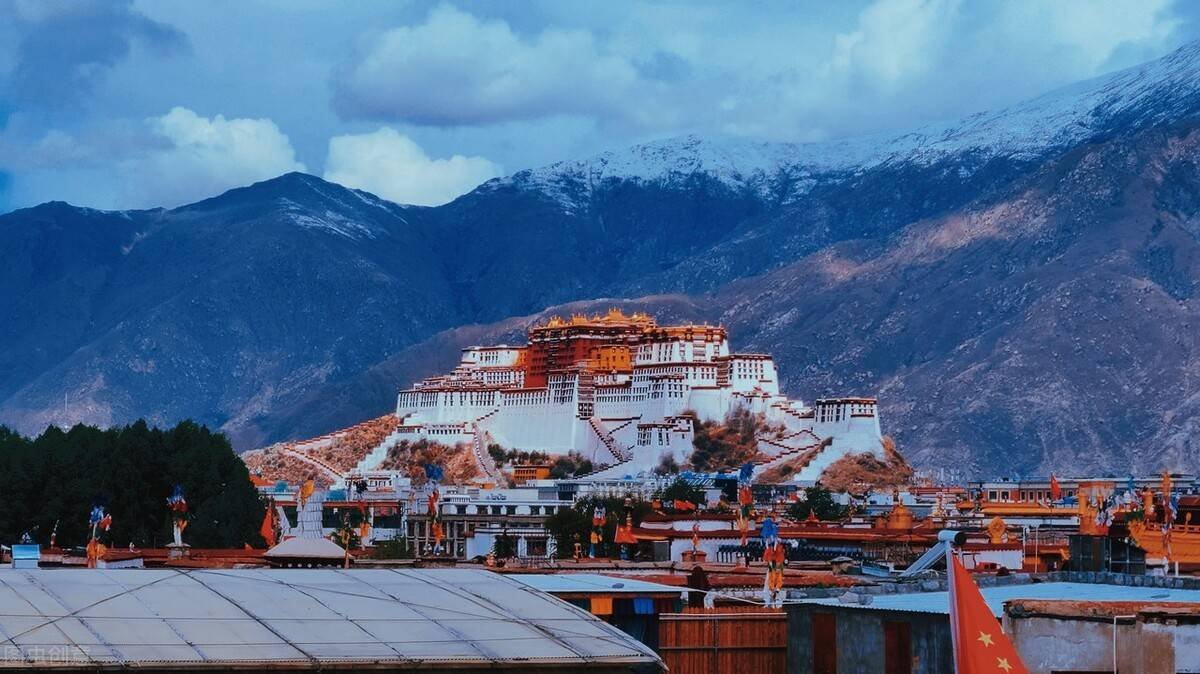When we think of Tibet, we often picture its stunning landscapes, rich culture, and unique traditions. However, most travellers tend to focus their trips on spring, summer, and autumn, overlooking the incredible experiences that Tibet has to offer in winter. In this article, we’ll debunk some common misconceptions and reveal the hidden gems of winter tourism in Tibet. From the enchanting scenic beauty to the economic benefits, we’ll explore why visiting Tibet during the winter season can be a truly rewarding experience.
Weather and Climate
Discovering Tibet’s Winter Warmth
Contrary to popular belief, winter in Tibet is not as bone-chilling as one might assume. In fact, many Northeastern friends who have experienced Tibet’s winter are reluctant to leave. The region enjoys abundant sunshine, allowing you to bask in the warm rays from November to February. During this time, nearly 90% of the days are sunny, with minimal rainfall or snowfall. Daily temperatures can range from a comfortable 10 to 20 degrees Celsius, while nights can dip to -10 degrees. This inviting climate, along with low humidity, makes winter in Tibet far from the frigid image often associated with the season.
Scenic Beauty
Winter’s Window to Wonders
One of the most enchanting aspects of winter in Tibet is the unparalleled visibility. The reduced mist and rain of the summer season grant you an excellent opportunity to witness breathtaking sights that are often hidden during other seasons. In summer, the chances of catching a glimpse of Mount Everest are just 40%, while the crystal-clear winter skies boost this to 95%. The majestic Namcha Barwa Peak, often elusive in summer, becomes a regular sight. Prepare for aesthetic overload as you explore Yanghu Lake and Namtso, their icy landscapes offering an unparalleled winter spectacle.
The Evergreen Oasis of Linzhi
While many assume that winter leaves all of Tibet barren, the region of Linzhi, aptly known as “Tibet Jiangnan,” remains a hidden paradise. Influenced by the water vapour from the Brahmaputra River, Linzhi remains green throughout the year. Verdant mountains, lush trees, and emerald waters characterize this region, often compared to an enlarged version of Jiuzhaigou. With its unique landscape and wide range of natural beauty, Linzhi defies the misconception of a barren winter in Tibet.
Cultural Experiences
Embracing Authentic Tibetan Festivals
Winter in Tibet is not just about the mesmerizing landscapes; it’s also a season of rich cultural experiences. The reduced tourist influx creates an opportunity to immerse yourself in local Tibetan festivals, like the “Fairy Day.” This festival celebrated on November 27, is a joyous occasion for Tibetan women. Husbands give gifts to their wives, and fathers reward their daughters with money. Men even give alms to women, fostering a unique and heartwarming atmosphere.
The Lantern Festival: A Winter Delight
Marking the 25th day of the Tibetan calendar’s 10th month, the Lantern Festival transforms the Jokhang Temple into a luminous wonderland. Monks light lamps throughout the temple, creating a mesmerizing spectacle that lights up the night sky. As believers gather to sing scriptures and commemorate Master Tsongkhapa, the scene is solemn and profoundly beautiful.
Seance: The Potala Palace’s Annual Dress-Up
Every year, before the Advent Festival on September 22 of the Tibetan calendar, the Potala Palace undergoes an annual “dress-up.” The white wall paint, which includes high-quality lime and sweet ingredients like milk, honey, sugar, and saffron, transforms the palace into a culinary masterpiece. This unique tradition showcases the Tibetan culture’s reverence for their heritage.
Economic Benefits
Winter Tourism – An Economical Adventure
Starting on October 15th, the “Winter Tour in Tibet” opens the door to cost-effective exploration. Popular attractions like the Potala Palace, Yamdrok Lake, Namtso, and Mount Everest Scenic Area are free to enter, eliminating the need for expensive scalped tickets. Accommodation in luxury hotels also comes at off-season prices, allowing travellers to experience Tibet at a fraction of the peak-season cost. This winter adventure represents the best value for money.
Fewer Tourists
Winter’s Personalized Experience
One of the perks of visiting Tibet in winter is the significant reduction in tourist crowds. With fewer visitors, you can enjoy a more relaxed and personal sightseeing experience. Whether you’re gazing at snow-capped peaks or exploring historic sites, the tranquil atmosphere enhances the magic of Tibet.
Misconceptions Debunked
Breaking the Myths
To truly appreciate winter in Tibet, it’s essential to dispel common misconceptions:
- Tibet is Warmer Than You Think: The region enjoys abundant sunshine, offering warmth and comfort throughout the winter season.
- Spectacular Scenery is Abundant: Winter enhances visibility, making it the best time to witness iconic landscapes and landmarks.
- Green Oasis in Winter: Linzhi’s evergreen landscape, nurtured by the Brahmaputra River, defies the perception of a barren winter.
Conclusion
Tibet in winter is a hidden gem, waiting to be explored by adventurous travelers. From the welcoming climate and stunning vistas to the rich cultural experiences and economic benefits, this season offers a unique and cost-effective journey. As misconceptions are debunked, it becomes evident that winter is, in many ways, the ideal time to unlock the wonders of Tibet.
Frequently Asked Questions
- Is Tibet too cold to visit in winter?
- Not at all. The winter season in Tibet offers pleasant temperatures and abundant sunshine.
- Are there any festivals to experience in Tibet during winter?
- Yes, winter in Tibet is a time for local festivals, including Fairy Day and the Lantern Festival.
- Are accommodations expensive during the winter season in Tibet?
- No, many luxury hotels offer lower prices during the off-season, making it an affordable time to visit.
- What is the best way to explore Tibet’s winter beauty?
- Consider participating in the “Winter Tour in Tibet” initiative, which provides free access to major tourist spots.
- Is it true that Mount Everest is more visible in winter?
- Yes, winter in Tibet offers superior visibility, making it an excellent time to see iconic landmarks like Mount Everest.
Unlock the wonders of winter in Tibet and make unforgettable memories in this unique and enchanting region.








